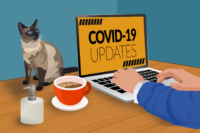Facing an angry customer can be challenging for any business. It’s crucial to respond thoughtfully to address their concerns while maintaining a professional tone. Crafting the best email response can turn a negative experience into a positive outcome, demonstrating commitment to customer satisfaction.
The key lies in acknowledging the customer’s feelings and providing a solution. This approach not only calms the situation but also fosters trust. A well-structured response shows that the business values feedback and is willing to make things right.
Using appropriate language and a clear format can enhance the effectiveness of the communication. By focusing on empathy and actionable solutions, businesses can transform customer interactions and improve overall relationships.
Understanding Customer Frustration
Customer frustration often stems from unmet expectations and perceived neglect. Recognizing these issues is crucial for addressing their concerns effectively. Clear communication can help mitigate anger and resolve conflicts.
Identifying the Root Causes
Customer frustration typically arises from specific issues. Common root causes include delayed responses, product failures, or service discrepancies. When a customer feels ignored or undervalued, their frustration can escalate.
To effectively identify these issues, businesses should implement feedback mechanisms. Listening to customer complaints allows for a better understanding of their needs. It can help businesses make necessary adjustments and prevent further dissatisfaction.
Perspectives on Customer Anger
Understanding how customers perceive their anger is vital. Many customers express anger when they feel that their concerns are not being acknowledged. They seek validation and want to feel heard.
To manage this effectively, companies should adopt an empathetic approach. Acknowledging the customer’s feelings can transform a negative experience into a more positive interaction. Active listening plays a significant role in diffusing anger, allowing businesses to respond more appropriately.
Email Response to an Angry Customer
Principles of Effective Communication
Effective communication is essential when responding to an angry customer. It requires skills that address their concerns directly and constructively.
Active Listening Skills
Active listening is a crucial skill for addressing an angry customer. This involves fully concentrating on what the customer is saying rather than preparing a response while they speak. Reflecting back their words helps to confirm understanding.
Key techniques include:
- Paraphrasing: Restating the customer’s concerns to show comprehension.
- Summarizing: Highlighting the main points of their frustration.
- Avoiding Interruptions: Letting the customer finish before responding.
By utilizing these techniques, the communicator can make the customer feel heard. This can significantly diffuse tension and allow for a more productive conversation.
Empathetic Tone and Language
Using an empathetic tone can shift the dynamics of communication. It helps in validating the customer’s feelings by expressing understanding and concern for their situation.
Important elements to consider:
- Choice of Words: Using phrases like “I understand how you feel” or “That sounds frustrating” can build rapport.
- Maintaining Calmness: A calm demeanor can influence the customer’s reaction positively.
Implementing these approaches cultivates a more supportive environment. This strategy not only addresses the immediate issue but also strengthens the overall relationship between the business and the customer.
Email Response to an Angry Customer
Crafting an Email Response to an Angry Customer
When addressing an angry customer, the way a response is structured is crucial. Effective communication can ease frustration and build trust. Key components include immediate acknowledgment of the issue, clear communication, and outlining corrective actions.
Immediate Acknowledgment
It is vital to quickly acknowledge the customer’s feelings. This shows empathy and understanding. Phrases like “I understand your frustration” or “I’m sorry to hear you are having this issue” can effectively validate their emotions.
Timeliness matters; don’t let too much time pass before responding. A prompt acknowledgment minimizes escalation and provides assurance that their concerns are being taken seriously.
Lastly, personally addressing the customer by name can enhance the connection, demonstrating that they are not just another case but an individual whose voice matters.
Clear and Concise Replies
Responses should be direct and to the point. This clarity reduces confusion and helps maintain focus on the issue at hand. Use simple language and avoid jargon; this ensures the message is easily understood.
Break down the response into bullet points if applicable. This format can help highlight key information, such as steps being taken to resolve the issue.
Reiterate the main concern presented by the customer in the reply. This shows attentiveness and reinforces that their feedback is valued. Oversharing unnecessary details can overwhelm the customer, so it is best to remain focused on the resolution.
Corrective Actions and Solutions
Providing clear solutions can greatly enhance customer satisfaction. Outline specific steps that will be taken to address the concern. This can include refunds, replacements, or any other corrective measures relevant to the complaint.
It is beneficial to include timeframes for when the customer can expect results. Transparency in the process builds confidence and assures the customer that their issue is a priority.
Additionally, invite further communication if the solutions are not satisfactory. Phrasing like “Please let us know if this resolves your issue” encourages continued engagement. This fosters a sense of partnership in resolving the matter.
Dos and Don’ts in Reply
Responding to an angry customer requires careful attention to language and tone. Employing positive phrasing and avoiding escalation can significantly improve the interaction.
Positive Phrasing Techniques
Using positive phrasing can transform a negative experience into a more constructive dialogue. This involves focusing on solutions rather than problems. For instance, instead of saying, “I can’t do that,” a representative might say, “What I can do is…”
Key techniques include:
- Acknowledge Concerns: Start by recognizing the customer’s feelings. Use phrases like, “I understand that you’re upset,” to validate their emotions.
- Use Positive Language: Frame responses in a positive light. Replace negative statements with affirmations, such as, “I will ensure this issue is resolved promptly.”
- Offer Solutions: Clearly state the next steps. For example, “We can offer a replacement” highlights a proactive approach instead of dwelling on the mistake.
This positive framework promotes a collaborative atmosphere and encourages the customer to engage constructively.
Avoiding Potential Escalation
Addressing an angry customer requires careful language to prevent further escalation. Being aware of word choice and tone is crucial.
To minimize escalation after an email response to an angry customer, consider the following:
- Stay Calm and Respectful: Maintain a calm tone, even if the customer is angry. Avoid defensive language like, “You’re mistaken,” which can provoke more frustration.
- Listen Actively: Let the customer express their concerns without interruption. Show empathy by repeating key points back to them to ensure understanding.
- Set Boundaries: If a customer becomes abusive, it’s important to set clear boundaries. Politely state, “I would like to help, but I cannot do so unless we remain respectful.”
These strategies help maintain control over the situation and steer the conversation toward resolution.
Examples of Email Responses
- Acknowledgment and Apology
“Dear [Customer’s Name],
Thank you for your feedback. We apologize for any inconvenience caused. Your concern is our priority.” - Resolution Offer
“Hello [Customer’s Name],
We appreciate you bringing this to our attention. We would like to offer a solution: [describe solution].” - Request for More Information
“Hi [Customer’s Name],
Thank you for your message. Could you please provide more details about the issue? This will help us assist you better.” - Confirmation of Action Taken
“Dear [Customer’s Name],
We have received your complaint and are currently investigating the matter. We will keep you updated on our progress.” - Clarification of Company Policy
“Hello [Customer’s Name],
We understand your frustration. We would like to clarify our policy regarding [specific policy] for you.” - Personal Touch
“Hi [Customer’s Name],
I personally regret that your experience wasn’t satisfactory. We value your patronage and are here to help.” - Follow-Up Email
“Dear [Customer’s Name],
We followed up on your issue and wanted to ensure that you are satisfied with our solution. Please let us know how we can assist further.” - Escalation Offer
“Hello [Customer’s Name],
If you feel your issue has not been addressed, I can escalate your complaint to a senior representative.” - Service Adjustment
“Hi [Customer’s Name],
Based on your feedback, we are making improvements to [specific service]. Thank you for helping us enhance our offerings.” - Invitation for Further Conversation
“Dear [Customer’s Name],
We understand that this situation might be frustrating. Please feel free to reach out directly if you’d like to discuss it further.” - Reassurance Email
“Hello [Customer’s Name],
We want to reassure you that your feedback is taken seriously and that we are working diligently to resolve this.” - Refund or Compensation Offer
“Hi [Customer’s Name],
We apologize for the inconvenience. We would like to offer you a refund/credit of [amount] as a gesture of goodwill.” - Feedback Acknowledgment
“Dear [Customer’s Name],
Thank you for sharing your experience. We take your feedback seriously and are committed to improving our service.” - Encourage Future Contact
“Hello [Customer’s Name],
Your satisfaction matters to us. Please do not hesitate to contact us for any future concerns.” - Thank You for Feedback
“Hi [Customer’s Name],
Thank you for your feedback. We appreciate you taking the time to share your thoughts with us.”
Email Response to an Angry Customer
Template 1
Dear [Customer],
We are sorry to hear that you are unhappy with your recent purchase. We appreciate your feedback and would like to help resolve the issue as soon as possible. Please reply to this email with your order number and a description of the problem, and we will do our best to resolve the issue to your satisfaction. Thank you for your patience and understanding.
Sincerely,
[Your Name] [Your Title]
Template 2
Dear [Customer],
We’re sorry to hear that you’re unhappy with your recent purchase. We want all of our customers to be satisfied with their purchases, and we’ll do our best to make things right. Please reach out to our customer service team at 1-800-123-4567 and they would be more than happy to help you with a return or exchange. We hope to hear from you soon and thanks for shopping with us.
[Your Name] [Your Title]
Template 3
Dear [Customer],
I am sorry to hear that you were unhappy with your recent experience at our shop. We strive to provide our customers with the best possible experience, and we are sorry that we failed to meet your expectations in this instance. We would love to do whatever we can to make things right. Please call us at 1-800-123-4567 or email us at customer@ so that we can resolve this issue as soon as possible. Thank you for your business, and we hope that you will give us another chance to serve you in the future.
Sincerely,
[Your name]
Template 4
Dear [Customer],
I’m sorry to hear that you were unsatisfied with your recent purchase. We strive to provide our customers with the best possible experience and I apologize that we fell short in this instance. I would be more than happy to help you with a return or exchange. Please email me atcustomerservice@example.com or give me a call at 1-800-123-4567 and I will be happy to assist you further. Thank you for your feedback and for giving us the opportunity to improve your experience.
Sincerely,
[Your Name] [Your Title]
Template 5
Dear [Customer],
Thank you for taking the time to fill out our patient feedback form. We are sorry to hear that you were not satisfied with your experience at our practice and would like to offer our sincere apologies. We strive to provide the highest level of care to all of our patients and are committed to making every visit a positive one. We appreciate your feedback and will use it to improve our services. Thank you for bringing this to our attention.
Sincerely,
[Your name] [Your Title]
When writing an email to an angry customer, it is important to maintain a professional and calm tone. Be sure to apologize for the inconvenience that the customer has experienced, and provide a brief explanation of what went wrong. If possible, offer a solution to the problem. Thank the customer for their patience, and let them know that you will be happy to help resolve the issue.
One step that makes all the difference? Always provide your contact information in case the customer needs to get in touch with you. Customers want to know that they will be heard and that they can reach out to the company. With this last step, you can diffuse a difficult situation and turn an angry customer into a satisfied one.
Post-Response Actions
After addressing an angry customer’s concerns, implementing effective follow-up strategies and measuring the success of the resolution become critical for maintaining customer satisfaction and loyalty. These actions help to ensure that similar issues do not arise in the future and reinforce positive customer relationships.
Follow-Up Strategies
Timely follow-up is essential after responding to an angry customer. This can be done through various channels, including email, phone calls, or social media.
- Timing is Key: Reach out within 24-48 hours after the initial response to show commitment.
- Personal Touch: Use the customer’s name and reference specific details from the previous interaction to enhance personalization.
- Confirmation of Resolution: Ask if the solution provided was satisfactory and if further assistance is needed. This feedback can provide valuable insights into customer perceptions.
- Provide Additional Resources: Share links to FAQs or relevant articles that may assist the customer further.
- Offer Continued Support: Send a message stating that the customer can reach out anytime for assistance.
Measuring Resolution Success
To evaluate the effectiveness of the response and follow-up, organizations should employ quantitative and qualitative methods.
- Customer Surveys: Short surveys after follow-ups can gauge customer satisfaction. Questions may include rating their experience and asking for comments.
- Net Promoter Score (NPS): Use NPS to determine customer loyalty by asking how likely they are to recommend the business based on their experience.
- Response Time Tracking: Monitor how quickly responses were sent to angry customers and how customers perceived these timelines.
- Retention Rates: Analyze if the efforts to resolve issues improve customer retention over time.
- Feedback Implementation: Track how feedback from these interactions influences changes in policies or procedures.
By utilizing these strategies, businesses can enhance customer relationships and foster a culture of continuous improvement.
Remember that the customer is angry and may not be receptive to criticism, so avoid being confrontational. Second, take responsibility for the problem and offer a solution. This shows the customer that you’re committed to resolving the issue and preventing it from happening again in the future. Finally, thank the customer for bringing the problem to your attention. This helps to diffuse the anger and show that you’re grateful for their feedback. By following these tips, you can turn an angry customer into a loyal one.




